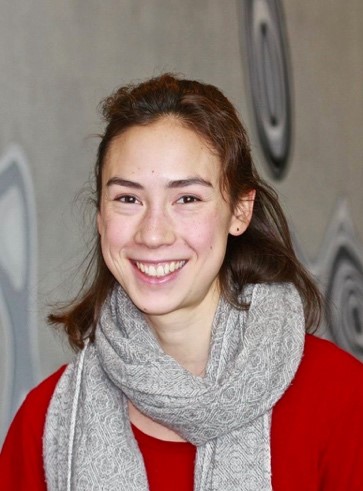Julia Hlavka-Zhang
 Name: Julia Hlavka-Zhang
Name: Julia Hlavka-Zhang
Nationality: Australian
Academic Background: Bachelor of Medical Sciences with 1st Class Honours from The University of Sydney; Graduated 2017
Project Title: HiC mapping of DNA conformations in healthy and leukemic hematopoietic cell populations.
Project Background/ (why should audience care about my research)? The hematopoietic system is a manufacturer of diverse blood cell types which function to deliver nutrients, maintain homeostasis and provide host defence in organs and tissues throughout the body. Hematopoiesis is the production line of these cell types, via a process of cellular differentiation. Hematopoietic cell populations are organized into a hierarchy, starting with self-renewable hematopoietic stem cells, that can differentiate into intermediate lineage-bias progenitors, which then differentiate into various mature blood cells. Orchestrating this process relies on cooperation between intracellular interactions and genomic structure to allow appropriate gene and protein expression to suit the cells specific function. Leukemogenesis, the development of leukemia, involves disruption to this fine-tuned mechanism due to inappropriate gene expression. Leukemias are characterized by the accumulation of immature blood cell, thus the key to eradicating the disease and prevent development is to target these leukemic cells.
The regulatory processes underpinning hematopoiesis and leukemogenesis are predominantly defined via genetic, epigenetic and gene expression profiling. Yet, these profiles lack information on the impact of genomic 3D conformation. With the recent technical development of the chromatin capture method, HiC, it is now possible to investigate the structural changes during hematopoiesis and leukemogenesis. Given the heterogeneity within leukemias, identifying and specifically targeting these malignant populations is challenging. Structural information, together with well-defined gene expression profiles of each population, will thus provide invaluable insight into the driving force of hematopoiesis and leukemogenesis.
Project Aim: Aim 1: Determine whether chromatin architecture varies between hematopoietic progenitor cells resulting in differential gene expression patterns that leads to lineage stability.
Aim 2: Assess the impact of genomic structural changes during hematopoiesis has on the formation of structural variations and leukemogenesis.
Expected Outcome: To obtain a profile of the genomic architecture across hematopoietic populations to establish how structure drives changes in lineage commitment or leukemia development.
Contact: julia.hlavka-zhang@bric.ku.dk
